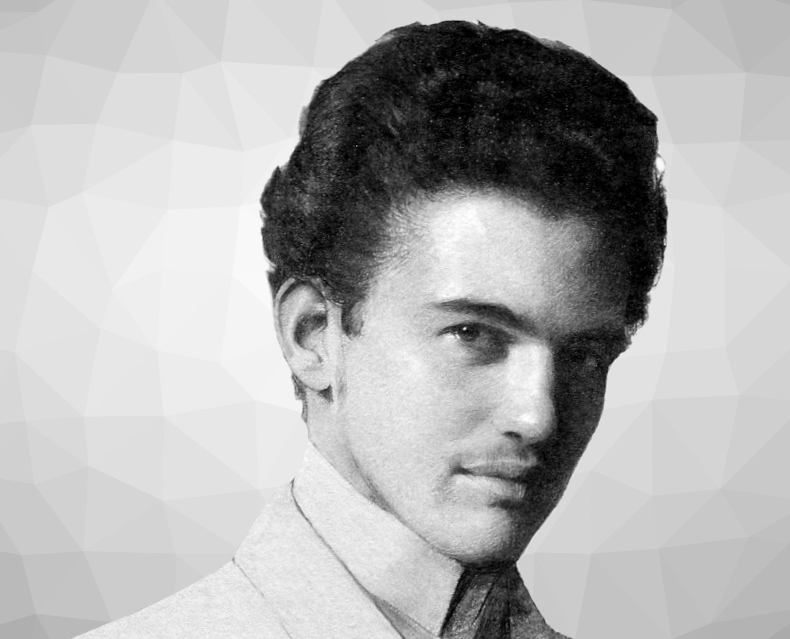Victor Moritz Goldschmidt was born on January 27, 1888, in Zurich, Switzerland. His father Heinrich Jacob Goldschmidt (1857–1937) was a physical chemist, and young Victor was named after his father’s colleague Victor Meyer. The family moved to Norway in 1901. Victor studied mineralogy, geology, and chemistry at the University of Kristiana (today’s University of Oslo, Norway) and received his Ph.D. in 1911 under the supervision of Waldemar Christofer Brøgger.
Goldschmidt became a Docent of Mineralogy and Petrography in Oslo in 1912 and was appointed Professor and Director of the Mineralogical Institute there in 1914. In 1929, Goldschmidt was appointed Chair of Mineralogy at the University of Göttingen, Germany. Goldschmidt had Jewish ancestors, and due to the rise of antisemitism and the NSDAP (National Socialist German Workers’ Party) in Germany, he resigned in 1935 and returned to Oslo.
In 1942, during the German occupation of Norway, Goldschmidt was arrested and his property was confiscated. He was transferred first to the Berg concentration camp near Tønsberg, Norway, and then—due to his poor health—to a nearby hospital as a prisoner. Based on an initiative by the University of Oslo, he was released to continue his research. However, he was rearrested shortly afterward and was due to be deported. His deportation order was canceled at the last minute, and Goldschmidt fled to Sweden in December 1942. In 1943, he moved to the UK, where he worked at the Macaulay Institute for Soil Research, Aberdeen, and at Rothamsted Experimental Station, Harpenden. In 1946, Goldschmidt returned to Oslo. Victor Goldschmidt died in Oslo on March 20, 1947.
Research
Goldschmidt is considered one of the founders of modern geochemistry. He worked, e.g., on the rules that govern the distribution of the chemical elements in the Earth and developed the Goldschmidt classification [1], which groups the elements within the Earth according to their preferred host phases. The groups are into lithophile (“rock-loving”), siderophile (“iron-loving”), chalcophile (“chalcogen-loving”), and atmophile or volatile (i.e., liquid or gaseous at ambient surface conditions). Lithophile elements, for example, are enriched in the Earth’s crust and have an affinity for forming oxygen-containing compounds. Siderophile elements, in contrast, tend to sink into the Earth’s core because they dissolve readily in iron.
Goldschmidt is also known for his work on crystal chemistry, e.g., for the Goldschmidt’s tolerance factor [2]. This is an indicator of the stability of crystal structures based on the ionic radii of their constituents. It was originally used to determine for which combinations of ionic radii a perovskite structure can occur.
Victor Goldschmidt is the answer to Guess the Chemist (123).
References
- [1] The principles of distribution of chemical elements in minerals and rocks,
V. M. Goldschmidt,
J. Chem. Soc. 1937, 655–673.
https://doi.org/10.1039/JR9370000655 - [2] Die Gesetze der Krystallochemie,
V. M. Goldschmidt,
Naturwissenschaften 1926, 14, 477–485.
https://doi.org/10.1007/BF01507527
Selected Publications
- Radioactivität als Hilfsmittel bei mineralogischen Untersuchungen,
V. M. Goldschmidt
Z. Kristallogr. 1908, 45, 490–494.
https://doi.org/10.1524/zkri.1908.45.1.490 - Über die Winkeländerung der Krystalle bei tiefen Temperaturen,
V. M. Goldschmidt,
Z. Kristallogr. 1913, 51, 1–27.
https://doi.org/10.1524/zkri.1913.51.1.1 - Geochemische Verteilungsgesetze und kosmische Häufigkeit der Elemente,
V. M. Goldschmidt ,
Naturwissenschaften 1930, 18, 999–1013.
https://doi.org/10.1007/BF01492200 - Grundlagen der quantitativen Geochemie,
V. M. Goldschmidt,
Fortschr. Min. Krist. Pet. 1933, 17, 112–156. - The geochemical background of minor-element distribution,
V. M. Goldschmidt,
Soil Sci. 1945, 60, 1–8.
Sources
- Obituary: Victor Moritz Goldschmidt 1888-1947,
Cecil Edgar Tilley,
Biogr. Mem. Fellows R. Soc. 1948.
https://doi.org/10.1098/rsbm.1948.0019 - Victor Moritz Goldschmidt: Father of Modern Geochemistry,
Brian Mason,
Geochemical Society, 1992.




